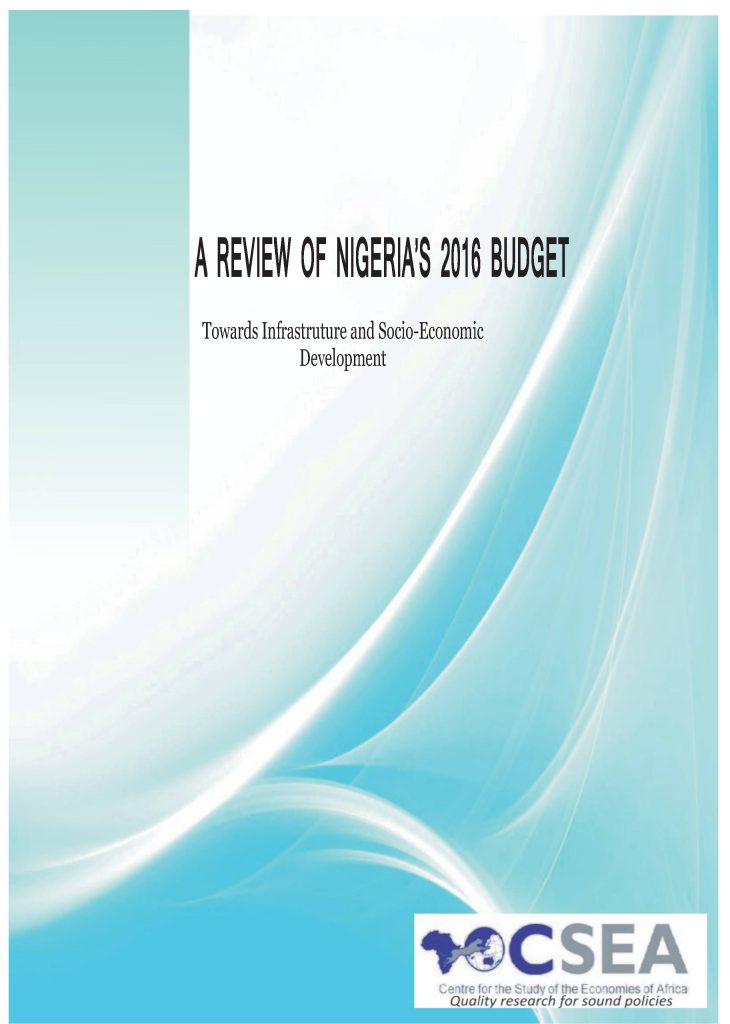Journal Articles and Book Chapters

August 2, 2016
A Review Of Nigerias 2016 Budget
This study
reviews and assesses the 2016
budget of the Federal Republic of Nigeria in line with IMFsbudget assessment indicators, namely: comprehensiveness, transparency, and
realism. The assessment is based on
clear understanding of the present
administrations objectives, which are: to achieve socio-economic
and infrastructural development, to diversify the Nigerian economy, and to
achieve improved security of lives and properties.
Related
Nigeria Economic Update (Issue 52)
Recently released
population estimate figures by the Nigeria Bureau of Statistics, show a
significant increase in Nigerias population, based on the 2006 census. Notably,
total population grew by an estimated 40 percent from 2006, to 193 million persons
in 2016. Also, disaggregate demographic data from 2007 to 2016, reveals
an increase in the number of males (74 million to 99 million) and females (71
million to 95 million), with a 2016 gender (males to females) percentage ratio
of 51:49. The high rate of population growth can be attributed to the improvements
in average annual rate of natural increase the difference between
crude birth rate and death rate. As in preceding years, the composition of
children and youths make up the highest share of the population growth. This presents
a potential increase in the rate of labour supply. Going forward, there is need
for the government to support rapid job creation in order to check the
potential upsurge in unemployment rate.
Nigeria Economic Update (Issue 38)
Recent
NBS data on Nigerias real GDP growth rate declined from -0.36 percent in
2016Q1 to -2.06 percent in 2016Q2. With negative GDP growth rate in
two consecutive quarters, Nigeria records its first recession in 23 years. Both
the oil and non-oil sectors continued to contract by -15.59 and -0.20
percentage points, respectively, relative to preceding quarter. The worsening
growth rate in the oil sector was largely driven by the decline in domestic crude
oil production by 14.5 percent relative to preceding quarter
